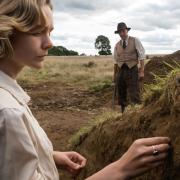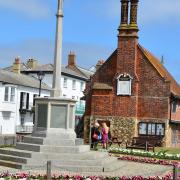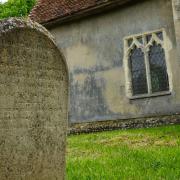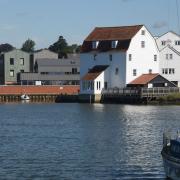Marion Welham is church buildings and tourism officer for the Church of England in Suffolk
Marion Welham is church buildings and tourism officer for the Church of England in Suffolk
My best ideas come when my head is free of the clutter of the day, so I keep a notebook handy from the time I wake up which is about 6am. An early start allows time for my husband James to take our boisterous retriever Barley across the fields before work while I get breakfast and sort out any packed lunches. I do the late afternoon walk, which means we both get some exercise and fresh air. In my past life as a journalist, I could write an entire feature before nine although later in the day was never as productive. With this job, I try to get strategies worked out and creative work done early in the morning before the phone calls and e-mails start. That way I can be clear about what I want to achieve. I’m one of 30 Support Officers across the country funded by English Heritage which is working with different partners, including the Church of England, to ensure that our historic places of worship are here for future generations. Here in Suffolk I’m on a three-year contract with the Diocese of St Edmundsbury and Ipswich. My job title is quite a mouthful but it reflects the fact that I support congregations in sharing their buildings with the wider community as meeting places, drop-in centres, or concert venues, rather as they might have been used in medieval times. Just the other day, I was telling delegates at a tourism conference how over 400 of our church buildings are medieval and some are older than castles, so it stands to reason we want visitors to come and see what amazing architectural treasures they are.
I’ve been described as a churches champion in the local press and I quite like that, although I have to say it is the volunteers who run the churches that are the real champions.
Suffolk excels in 15th century perpendicular architecture and the soaring towers with their decorative flint flushwork are absolute masterpieces of medieval craftsmanship. Inside you can find priceless collections of medieval glass, magnificent angel roofs and exquisitely carved screens. Every single one, whether medieval, Victorian or modern, has something to discover. I’ve been in this job less than four months, long enough to know that no two days are the same. The other day, for instance, I was out on site looking at a church’s plans for a loo and kitchen, then off to promote the diocesan church maintenance scheme. After that I was taking photographs of some ancient wall paintings at Westall church near Beccles while volunteers dodged round me cleaning the floors. An hour later I was writing to parishes about Open Churches Week in July. The majority of our churches are open all year but this event gives them a chance to do something special for visitors.Not long ago I was on the train to London to meet other support officers at English Heritage. One of the things we discussed was that this year, for the first time, church buildings at risk of decay will go on the Heritage At Risk register which means they’ll be less likely to slip through the net when it comes to repair and conservation.I’ve been described as a churches champion in the local press and I quite like that, although I have to say it is the volunteers who run the churches that are the real champions. One church opens its doors in the evenings for teenagers to play pool, treating them to freshly-baked chocolate cake on Fridays which is really big-hearted. Others offer history tours for schools, bell-ringing workshops, or a welcoming space for parents to bring their little angels after school. And there’s seemingly no limit to fantastic flower festivals, summer fetes and wonderful musical concerts.It’s no easy task keeping a 600-year-old building in good shape and you might think negativity would set in but I’ve been amazed at the energy and enthusiasm that’s come across in all the letters and e-mails I’ve received. It reminds me just what an honour it is to have this job.Emails and websites make life so much easier when it comes to keeping in touch with the 478 churches in this diocese although we always make sure we do postal mailings for those who need them. There’s a tourism section on the Diocesan website and I try to put up a newsletter every month. I like to share inspiring examples of the way people use church buildings and welcome visitors. My favourite way of unwinding is working in the garden and my mark of success is when it comes alive with bees and butterflies in summer. I think that’s what churches should be like. You should get a real buzz when you walk through the door.


























